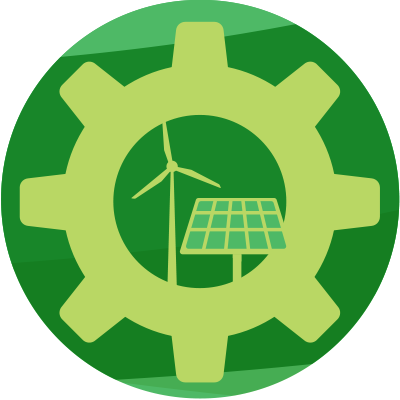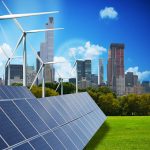This toolkit will help you develop a pledge campaign on mainstreaming the 100% renewable energy vision. It shows you how you can influence a target to pledge to go 100% renewable energy. It is divided into logical steps and complemented by fact sheets and case studies that can be found in the Facts and Stories section of this website and campaign planning templates which can be found in this folder and are referred to throughout the document.
What is this toolkit?


Why use it?
This toolkit is for anyone who wants to campaign to make the vision of a 100% renewable powered world a reality. Millions of communities, businesses, local governments and others are pledging to go 100% renewable,asking action to keep fossil fuels in the ground and invest and deploy renewable energy solutions in their place – but we need to speed up this transition.
This toolkit throughout refers to two types of campaigning:
- As an instrument to raise awareness: This toolkit will help you plan campaigns that put the 100% renewable energy vision front and centre, ensuring that everyone knows about the feasibility, benefits and urgency to go 100% renewable energy.
- To put pressure on a specific target: It will also help you plan campaigns which have a specific aim to put an institution e.g. a business, on a pathway to 100% renewable energy by convincing them to pledge to go 100% RE and put the systems in place to achieve it.
Who is this toolkit for?
The toolkit can be used by people or organisations very new to campaigning who want to set up new campaigns. It can also be used by organisers already running 100% renewable adoption campaigns to develop their strategy further.

What is a campaign?
Essentially campaigning is about creating change or making something happen. Campaigning is to influence a certain group (or groups) to bring about the outcome you want to see.
For a more comprehensive introduction to campaigning check out 350.org’s excellent campaign trainings online manual.
It is important when you start a campaign to agree on a set of common terms. This is to avoid confusion. Here is a list of the terms we use in this toolkit.
Vision: This is what you want the world to look like in the future, which your campaign and advocacy will work towards, in conjunction with others, to achieve.
Advocacy: this is more often seen as directly ‘giving a voice’ to people to change the attitude of your target.
Campaign: a planned set of actions to influence a target to change in a prescribed way.
Goal: The end point of change you want to see after your campaign
Objective: Smaller end points of change that sit under your goal, the steps that will need to be achieved in order to meet your goal.
Tactics: The activities and actions you plan to do in order to achieve your objectives.
Power analysis: An analysis carried out as part of campaign planning in order to understand the relevant actors to the change you want to see, and what power they have to help or hinder you.
Communications strategy: A strategy for how you craft your message to your target, both the specific language and the medium to communicate through, for maximum impact.
Monitoring: A process of keeping track of how your campaign tactics are helping you achieve your objectives
Evaluation: Usually by using your results of your monitoring, you can establish whether the impacts of your tactics have achieved your objectives, and thus whether you have met your goal. If not done during your campaign, you can re-evaluate your strategy or assess your campaign – what worked or didn’t work – before your next campaign.
Why run a campaign on 100%RE target adoption?
What is the Theory of Change of 100% RE Adoption campaigns?
Coordinated campaigning to get as many institutions, businesses, cities, and countries to publically commit to go 100% renewable will accelerate the actual transition to 100% renewable energy in the world’s energy mix. When businesses, cities and other institutions around the world pledge to go 100% RE, they contribute to mainstreaming the vision that a 100% renewable energy world is feasible and beneficial for jobs, health, energy access and prosperity for all. The more champions and public support we gain around the 100% renewable energy vision, the much more likely we will see a just global transition.

Here are some of the reasons to campaign on 100% RE adoption now:
a. Urgency
“In a business as usual scenario, where little progress is made in the development and implementation of global climate policies, global greenhouse gas emissions could rise to up to 87 GT CO2e by 2050, way beyond safe limits”, said Achim Steiner, former Director of the UN’s Environment Programme. Therefore, there is an urgent need to accelerate the just transition to 100% renewable energy to stay below the recommended upper limit of CO2 emissions. Climate scientists have agreed that this limit is set at 40 gigatonnes CO2 per year until 2020. GHG emissions in total will have to decline towards zero by latest 2100. Clearly we emit more emissions currently than we can afford, in order to create a safe climate. The effects of an unstable climate are already apparent. 2015 was the hottest year on record, and in the last 20 years there has been an increase in climate related disasters and impacts. (UNISDR, 2016)
Transitioning to 100% renewable energy and keeping fossil fuels in the ground is a key component to reducing our GHG emissions and stay below the maximum 1.5°C temperature increase which is deemed as having less devastating effects. Although there have been advances in renewable energy technology and investment, with the price of solar and wind being cheaper in many places than fossil fuels and nuclear, the acceleration is not yet fast enough to put us on a pathway to transition to 100% renewable energy by mid-century. By this point of time we need to reduce carbon emissions according to scientific evidence. To accelerate the transition, we need bolder 100% renewable energy campaigns which will exert pressure on national governments, investors, and the fossil fuel industry.
b. There is global movement and a global agreement
Even before the Paris Agreement was forged at the end of 2015 and ratified in late 2016, countries, cities, businesses and communities were already on track to go 100% renewable, and more and more each month, have set new targets and policies in order to achieve this transition. For instance, Vancouver, Canada announced in April 2015, that they will obtain 100% of its energy from renewable sources.
The Paris Agreement, and its subsequent signing by over 120 member states in April 2016 and its early entry into force the very same year, signalled that there was global agreement on the need to reduce our dependence on fossil fuels and avoid catastrophic warming. All countries acknowledged the desire to limit warming to no more than 1.5C by 2100 which, as the IPCC and other scientific reports have suggested, effectively must mean ending all CO2 emissions by 2050, which means leaving fossil fuels in the ground and going 100% renewable.
But the Paris Agreement moment wasn’t just significant because of the political agreement made. Millions of people around the world showed that they want a climate safe planet. In 2015 all over the world millions marched, took part in events, divested, prayed, and of course joined national campaigns. By running a 100% renewable energy campaign you join that momentum.
c. Co-Benefits
100% renewable energy will not just help us phase out carbon emissions for a safe climate, but can help deliver other significant benefits. Each of the benefits below is a link to a fact sheet. Come back to look at these after Step 1: Situational Analysis, to decide which co-benefits of renewable energy will work best for your audience in your campaign.
- Feasibility:
- Energy access
- Health:
- Between 2011-2012 between 80,000 to 115,000 people died premature deaths from dirty and toxic emissions from coal plants.
- In China, over 250,000 people are suffering illness and potentially deaths due to serious air pollution.
- Renewable energy avoids the costs associated with negative health impacts of fossil fuels – estimations suggest these can go up to 886.5 billion USD, equaling up to 6% of the GDP.
- In the US-american state of Ohio promoting renewable energy reduced particulate matter population to prevent least 16,900 lost work days, 2,230 asthma attacks, 120 asthma emergency department visits, 100 hospital admissions, 230 heart attacks, and at least 140 premature deaths, according to the NRDC.
- Off-grid RE installations help to power hospitals where energy supply is unreliable, preventing delay in live-saving care such as more timely blood transfusions.
- Investment opportunities:
- Capital raised by off-grid renewable energy companies
- Global new investment in renewable power and fuels
- Global new investment in renewable power and fuels by country/region
- The jump in investment in 2014 reflected strong performances in many of the main centres for renewable energy deployment, with China up 32% to a record $89.5bn, the US up 8% to $51.8bn, Japan up 12% to $41.3bn, Canada up 26% at $9bn, Brazil up 88% at $7.9bn, India up 14% to $7.9bn, and South Africa up 5% at $5.5bn. Europe, despite the flurry in offshore wind, was a relative dull spot overall, investment there edging 1% higher to $66bn.
- Energy security & independence
- Since RE is generated in-country, it can increase a country’s energy independence and reduce fossil fuel imports.
- In 2013, the generating capacity from new water, wind and solar sources exceeded that of new fossil-fuel and nuclear facilities for the first time, as such clean energy now contributes 9.6% of the energy used in China, up from 5.6% in 2000.
- In a country where the levels of annual solar radiation range between 4–7 kWh per m2 per day, solar photovoltaic can play a key role in the provision of affordable, sustainable and locally generated electricity for lighting, heating and ventilation systems, and drying.
- Renewable energy can be run on smaller microgrids than the traditional nation wide grids. Microgrids give communities more control over their energy supply, literally ‘people power’, and empower subnational entities.
- Economic strengthening
- Tax revenues from renewable energy projects can support public services. For example, an analysis of tax revenues associated with renewable energy could generate total tax payments to the German municipalities of up to $414,000 over 20 years.
- Job generation
- Food security
- Water-energy-food nexus
- RE helps to mitigate climate change and its adverse effects which could push 600 million people into malnutrition by 2080.
- In dry regions such as Kenya, solar powered pumps irrigation helps to irrigate 6% of farmland and benefits almost 3 million smallholders. They are also cheaper than traditional diesel pumps.
- Helps increase productivity by improving post-harvest treatment through e.g. solar refrigeration technologies.
- Gender equality
- Women represent 25% of the workforce in the renewable energy industry and continues to employ more women than other sectors.
- By powering households lacking energy access, women can increase productivity.
d. Feasibility
Numerous examples from around the world, from El Hierro – the most western of the Canary Islands – to Frankfurt in, Germany, demonstrate that transitioning to a world powered by 100% renewable energy is possible with existing technologies.
Case 1: El Hierro, Canary Islands, Spain
The island El Hierro runs on 100% renewable energy. In 1997 El Hierro, which roughly 10.000 people inhabit, formulated a Sustainability Plan which aimed to become largely energy self-sufficient to circumvent the island’s high fossil fuel prices due to its remote location. Nowadays, 100% of the people’s energy demand is met with renewable energy. The support of citizens and participation of all levels strongly contributed to the project’s success. Excess wind energy is currently used to power water ways, to ensure a stable electricity supply in case the wind is weak.
El Hierro’s next step is to replace fuel-based cars by electric vehicles. The Go 100RE campaign estimates that the island’s population saves over 1.8 million Euro annually due to reduced fossil fuel imports whilst avoiding 18,700 tonnes of CO2 per year.
Case 2: 100% renewable energy vision of Frankfurt, Germany
The German City of Frankfurt is known for its international airport and for being a national, regional and international financial centre, but can also be known for its plans to go 100% renewable by 2050. The city is pursuing ambitious activities to achieve this target. It committed to updating its carbon footprint annually, and works with a multitude of stakeholders at every stage of planning and implementation, including businesses, banks and civil society. The measures have been saving the city around 100 million Euro to date. It shares what it has learnt with other cities through several sustainable city initiatives, such as Energy Cities.
Many other villages, towns and cities have been implementing regionally appropriate best practices and policies to achieve 100% renewable energy, showing that it is both possible and affordable.
Generally, 100% renewable energy targets can be delivered if:
- energy efficiency enhancements are given priority,
- the heating/cooling and transport sector are electrified,
- citizens are able to participate in any promotion schemes,
- and energy policies are integrated into fiscal and economic policies.
If you want to learn more arguments for a renewable energy transition and its feasibility, check out Greenpeace’s Myth Buster and the Global 100% RE campaign’s fact sheet.

Planning your campaign
If transitioning to renewable energy not only benefits everyone but helps to mitigate climate change and is feasible to achieve, why doesn’t everyone pledge to go 100% renewable energy?
To answer this question, and to choose your target, at the beginning of your campaign planning you should undertake the following first steps.

If politics is the ‘art of the possible’, campaigning is the science and art of changing what is possible. Campaigning lowers the barriers and increases the incentives to take action.
Director International Development at Canadian Red Cross




